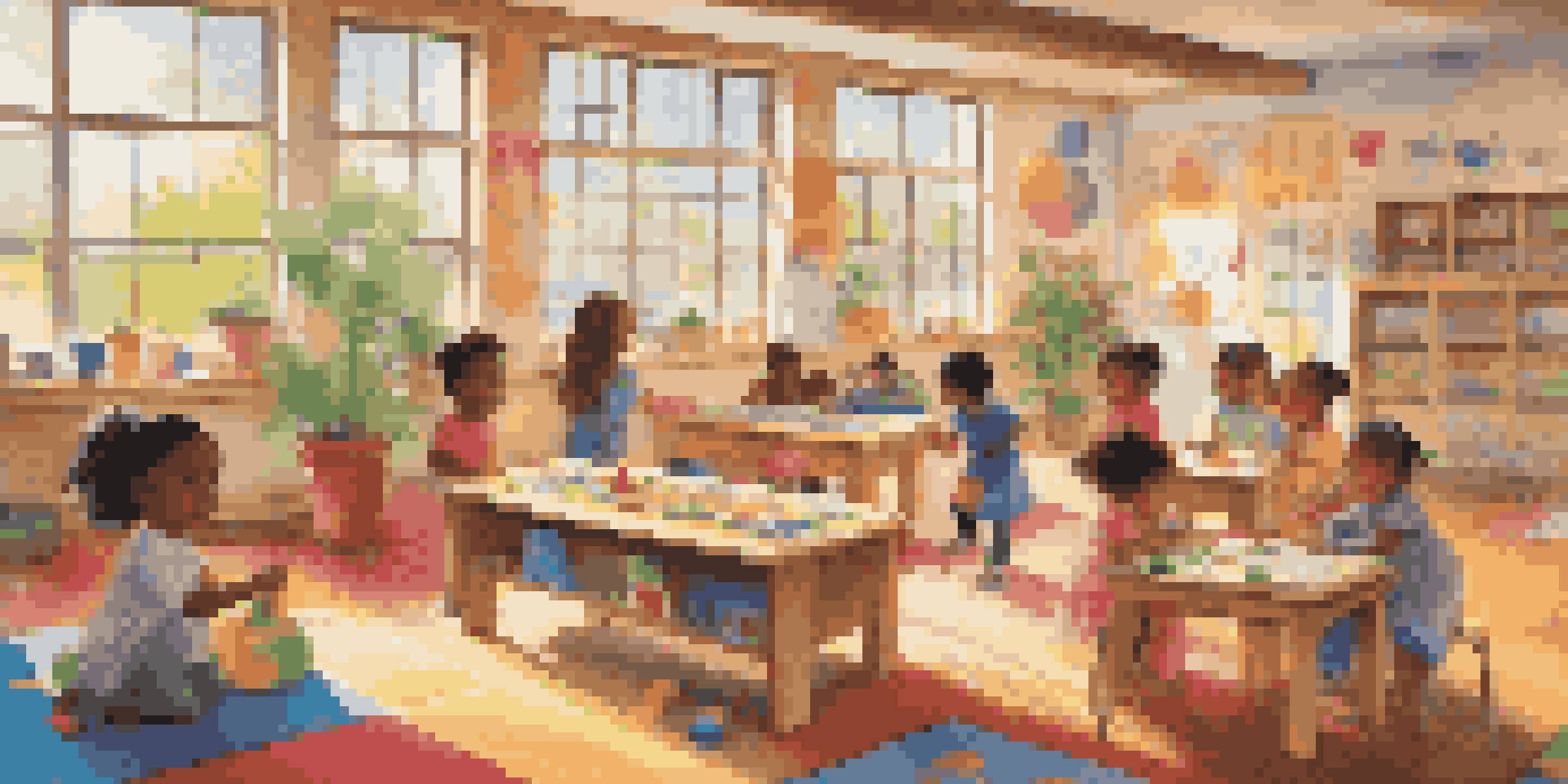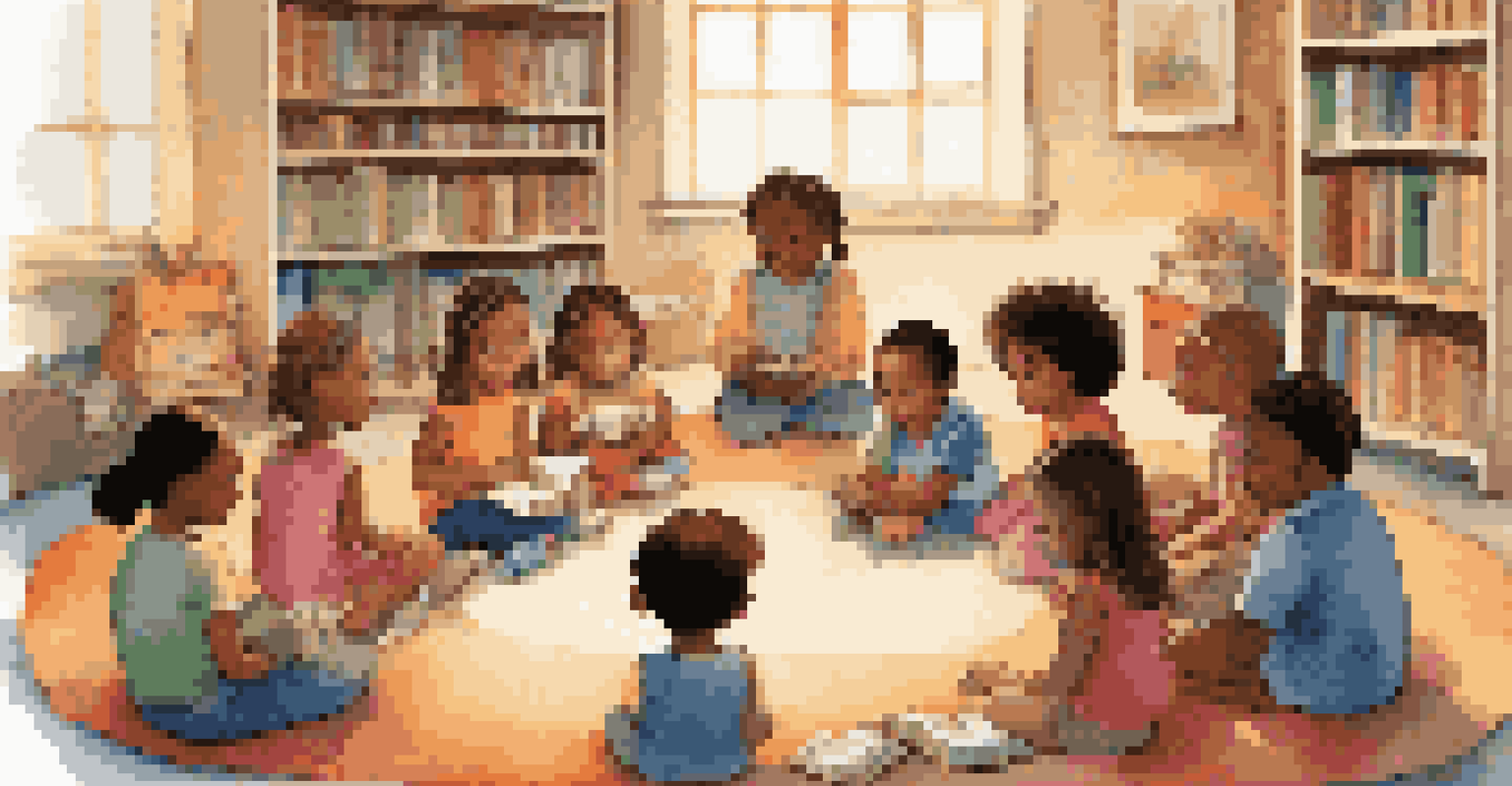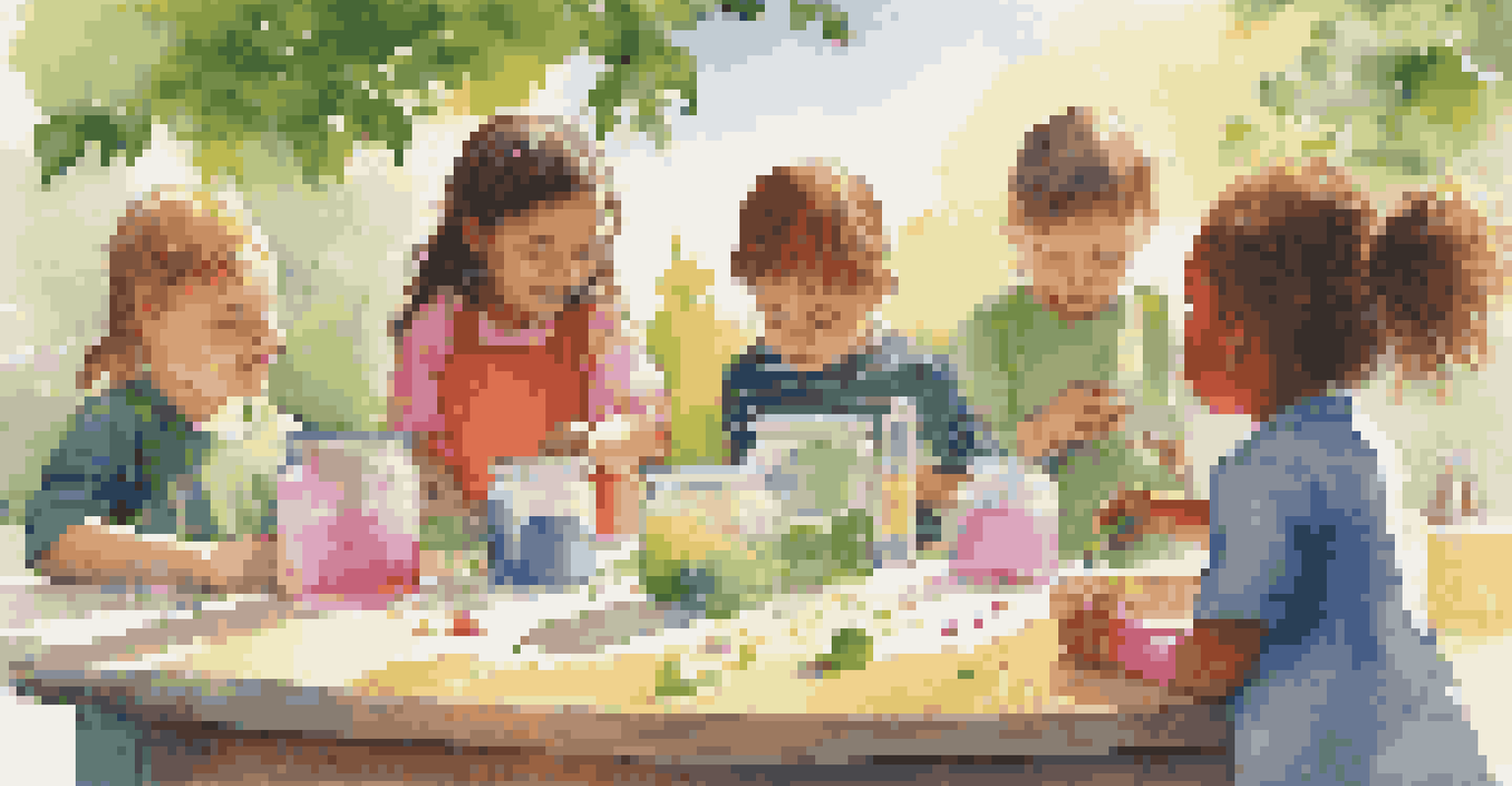The Benefits of Collaborative Learning in Early Childhood Classrooms

Understanding Collaborative Learning in Early Childhood
Collaborative learning is an educational approach that emphasizes group work and shared responsibility. In early childhood classrooms, this means children engage in activities together, learning from one another in the process. This method is about more than just completing tasks; it's about fostering relationships and developing social skills.
Alone we can do so little; together we can do so much.
By working collaboratively, young learners can explore different viewpoints and approaches to problem-solving. For instance, when children build a structure together, they not only share ideas but also negotiate roles and responsibilities. This interaction lays the groundwork for effective communication and teamwork, which are crucial life skills.
Ultimately, collaborative learning transforms the classroom into a dynamic community where children feel valued and heard. This sense of belonging boosts their confidence and encourages them to express themselves freely, setting the stage for a positive learning environment.
Enhancing Social Skills Through Group Activities
One of the most significant benefits of collaborative learning is the enhancement of social skills. Young children often learn best through play, and group activities provide ample opportunities for them to practice sharing, taking turns, and resolving conflicts. These interactions teach children how to navigate social situations, an essential skill for their future.

For example, during a group art project, children may need to discuss and agree on a theme. This not only fosters creativity but also encourages them to listen to each other's ideas and compromise. Such experiences not only enhance their artistic abilities but also cultivate important social skills that they will carry into adulthood.
Boosting Social Skills Through Play
Collaborative learning enhances children's social skills by providing opportunities for sharing, taking turns, and resolving conflicts during group activities.
Moreover, these social skills contribute to a sense of community within the classroom. As children collaborate, they build friendships and learn to appreciate diversity, understanding that everyone brings unique strengths to the table. This appreciation fosters a positive classroom culture, where empathy and respect thrive.
Boosting Cognitive Development Through Collaboration
Collaborative learning doesn't just enhance social skills; it's also a powerful tool for cognitive development. When children work together, they challenge each other's thinking and push the boundaries of their understanding. This interaction helps them develop critical thinking and problem-solving skills.
The whole is greater than the sum of its parts.
For instance, when faced with a challenging puzzle, children might brainstorm different strategies together. Through discussion and experimentation, they learn that there can be multiple solutions to a problem, which encourages creativity and flexibility in their thinking. This kind of collaborative exploration is essential for cognitive growth.
In addition, this method allows educators to observe and assess individual learning styles and strengths. By seeing how children interact and contribute to group tasks, teachers can tailor their instruction to meet the diverse needs of their students, enhancing overall learning outcomes.
Fostering Emotional Intelligence in Young Learners
Emotional intelligence, or the ability to understand and manage one's emotions, is crucial for children's development. Collaborative learning creates an environment where children can express their feelings and learn to empathize with others. This emotional awareness is vital for developing healthy relationships.
For example, when children work in groups, they often encounter moments of frustration or disappointment. Through these experiences, they learn to recognize and articulate their emotions, as well as support their peers in managing theirs. This process helps them build resilience and emotional regulation skills.
Fostering Emotional Intelligence
Working together in groups helps children develop emotional intelligence by recognizing and managing their emotions while supporting peers.
As they navigate these emotional landscapes together, children develop a deeper understanding of themselves and their peers. This connection enhances their emotional intelligence, equipping them with the skills to handle social situations with confidence and compassion throughout their lives.
Encouraging a Love for Learning Through Interaction
Collaborative learning can ignite a passion for learning in young children. When they engage with their peers, learning becomes a fun and shared experience rather than a solitary task. This excitement can lead to a lifelong love for education.
For instance, when children participate in group science experiments, the joy of discovery is amplified by the shared enthusiasm of their classmates. This collective curiosity encourages them to ask questions and seek answers together, making learning a more dynamic and enjoyable process.
By fostering this love for learning through collaboration, educators help instill a growth mindset in children. They learn that challenges are opportunities for exploration and that learning is a journey best undertaken together.
Building a Strong Classroom Community
Collaborative learning plays a crucial role in building a strong classroom community. When children work together, they develop bonds and create a sense of belonging. This community feeling is essential for creating a safe and supportive learning environment.
As children collaborate on projects, they learn to appreciate each other's contributions and celebrate their successes as a group. This collective achievement fosters a sense of pride and accountability, encouraging children to support one another both academically and socially.
Building a Strong Classroom Community
Collaboration cultivates a sense of belonging among students, creating a supportive environment that enhances both individual and collective learning.
A strong classroom community not only enhances individual learning experiences but also prepares children for future collaborative environments, whether in school, work, or their personal lives. They learn that working together can lead to greater accomplishments than working alone.
Promoting Inclusivity and Understanding Differences
Collaborative learning provides an excellent platform for promoting inclusivity among students. In diverse classrooms, children have the opportunity to interact with peers from various backgrounds and cultures. This exposure fosters understanding and appreciation for differences.
When children collaborate, they learn to value each other's unique perspectives and experiences. For example, during a group project, a child might share a cultural tradition that enriches the group's understanding and approach. This exchange not only broadens their horizons but also cultivates respect and empathy.

In this way, collaborative learning becomes a powerful tool for social justice. By teaching children to celebrate diversity and work together, educators help create a more inclusive society where everyone feels valued and accepted.
Conclusion: The Lasting Impact of Collaborative Learning
In conclusion, the benefits of collaborative learning in early childhood classrooms extend far beyond academic achievement. By fostering social skills, cognitive development, emotional intelligence, and a love for learning, this approach prepares children for future success in various aspects of life. The relationships formed during collaborative activities create a foundation for lifelong connections.
As educators and caregivers, embracing collaborative learning can transform the educational experience for young children. It nurtures a positive classroom environment where every child is empowered to contribute and grow, setting the stage for a bright future.
Ultimately, the impact of collaborative learning reaches into the broader community, teaching children the value of cooperation and understanding. By investing in collaborative practices today, we are shaping compassionate, capable individuals ready to take on the world.